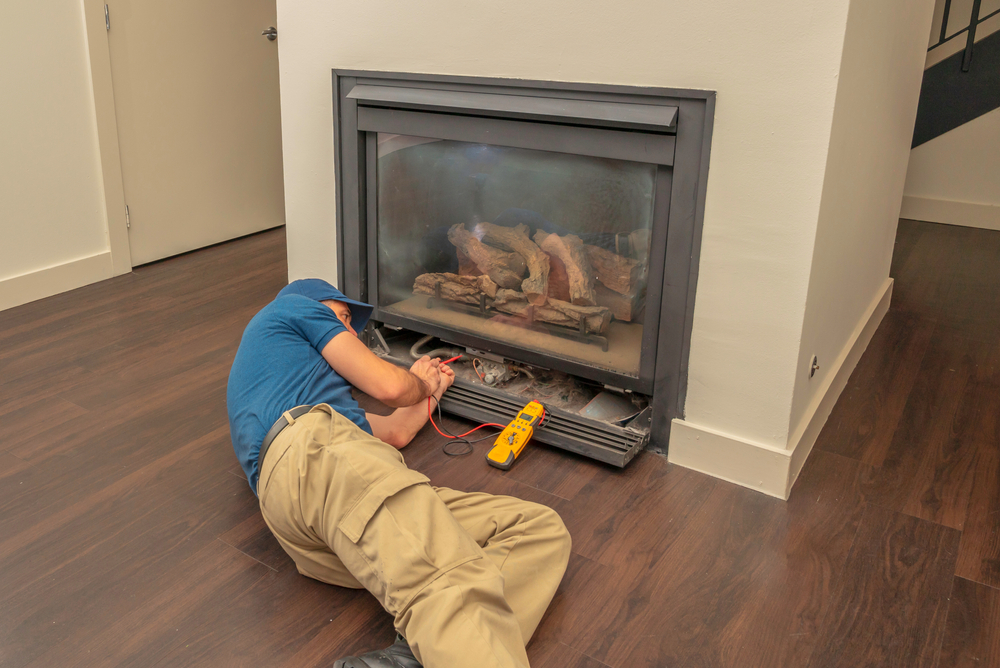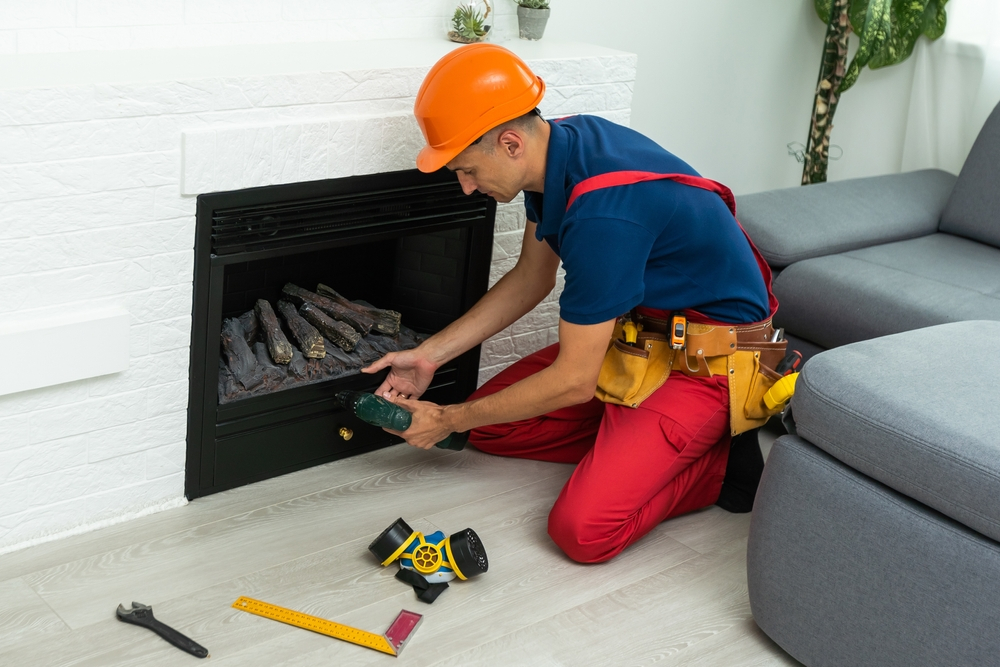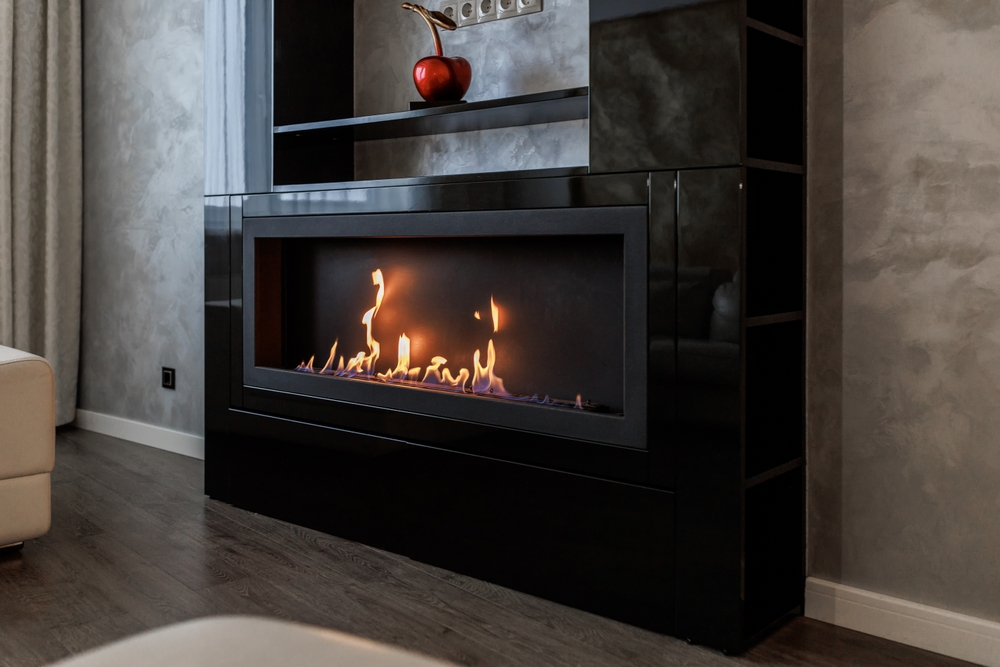Gas Fireplace Cleaning Louisville
It can get cool in the winter or evening in Louisville, Kentucky.
Did you know that your gas fireplace needs to be serviced every year to ensure safe operation?
If you are like most people you were unaware of this necessity.
It is recommended that a licensed service technician inspects your gas fireplace annually to ensure the safe, efficient, and reliable operation of your gas unit.
For the safety of your home, it is recommended that both gas fireplaces and wood-burning fireplaces including stove inserts and pellet stoves be serviced once a year. Any time you have a live-fire burning in your home you want to make sure everything is performing at optimal efficiency for safety and reliability.
There are a lot of moving parts in gas fireplaces. Servicing those parts to make sure they have been adjusted appropriately and identifying when they need to be replaced will give you peace of mind when using your appliance. Those parts will also last longer when they are serviced on an annual basis saving you money in the long run.
Another thing to consider is that there is a higher risk of having a carbon monoxide issue due to parts wearing out if you do not get your fireplace inspected by a professional every year.
If you don’t use your gas unit often there is a possibility of bugs and spiders in the venting living and spinning webs. This can cause issues with proper venting and can also be a factor in causing a carbon monoxide issue.
So even though gas fireplaces don’t cause creosote build up like in a wood-burning fireplace there can still be issues with parts needing to be replaced or adjusted. A yearly inspection is the best solution to keeping your family safe from carbon monoxide leaks due to unexpected failure of worn-out parts.
We offer gas fireplace repair and cleaning here in Louisville, Kentucky. Chimcare started years ago as a family-based business. Since then we have grown from one chimney sweep to a crew of licensed technicians offering you home solutions from fireplace inspection, cleaning, installation, and other related services.
Simply call to schedule an inspection in Louisvillefor gas fireplace cleaning which will include the safety inspection. This service will give you peace of mind, save you money, and could save your life.
Facts About Louisville
| Jan | Feb | Mar | Apr | May | Jun | |
|---|---|---|---|---|---|---|
| Average high in ºF | 43 | 48 | 58 | 69 | 77 | 85 |
| Average low in ºF | 27 | 30 | 38 | 47 | 57 | 66 |
| Av. precipitation in inch | 3.24 | 3.18 | 4.17 | 4.01 | 5.27 | 3.79 |
| Av. snowfall in inch | 4 | 5 | 1 | 0 | 0 | 0 |
| Jul | Aug | Sep | Oct | Nov | Dec | |
|---|---|---|---|---|---|---|
| Average high in ºF | 89 | 88 | 82 | 70 | 58 | 46 |
| Average low in ºF | 70 | 69 | 60 | 49 | 40 | 30 |
| Av. precipitation in inch | 4.23 | 3.33 | 3.05 | 3.22 | 3.59 | 3.83 |
| Av. snowfall in inch | 0 | 0 | 0 | 0 | 0 | 3 |
Source: https://www.usclimatedata.com/climate/louisville/kentucky/united-states/usky1846
Between the 1970-2000 official US census count, Louisville had been losing population each decade. As of the 2000 census, Louisville had a population of 256,231, down from the 1990 census population of 269,063.[12] Due to the city-county merger that occurred in 2003, which expanded the city limits, the city’s population increased to 597,337 at the 2010 census count.
Louisville is the largest city in Kentucky, with 17.1% of the state’s total population as of 2010; the balance’s percentage was 13.8%.[56] In 2010, over one-third of the population growth in Kentucky was in Louisville’s CSA counties.[citation needed]
The 2007 demographic breakdown for the entire Louisville Metro area was 74.8% white (71.7% non-Hispanic), 22.2% black, 0.6% American Indian, 2.0% Asian, 0.1% Hawaiian or Pacific islander, 1.4% other, and 1.6% multiracial. About 2.9% of the total population was identified as Hispanic of any race. During the same year, the area of premerger Louisville consisted 60.1% white, 35.2% African American, 1.9% Asian, 0.2% American Indian, and 3.0% other, with 2.4% identified as Hispanic of any race.
Of the 287,012 households, 29.6% had children under the age of 18 living with them, 45.2% were married couples living together, 14.7% had a female householder with no husband present, and 36.2% were not families. About 30.5% of all households were made up of individuals, and 10.3% had someone living alone who was 65 years of age or older. The average household size was 2.37 and the average family size was 2.97.
The age distribution is 24.3% under the age of 18, 8.9% from 18 to 24, 30.4% from 25 to 44, 22.8% from 45 to 64, and 13.5% who were 65 years of age or older. The median age was 37 years. For every 100 females, there were 91.60 males. For every 100 females age 18 and over, there were 87.60 males.
The median income for a household in 2017 was $51,960. For non-family households the median income was $32,446, and for family households was $67,965. In 2017, males had a median income of $36,326 while females had a median income of $30,464.[57] The latest available data for per capita income comes from 2006, and was $23,304 for the county.[58] About 9.5% of families and 15.1% of the population were below the poverty line in 2017, including 23.5% of those under age 18 and 8.2% of those ages 65 or over.[59]
Source: https://en.wikipedia.org/wiki/Louisville,_Kentucky#Demographics




 >
>
Leave a Reply